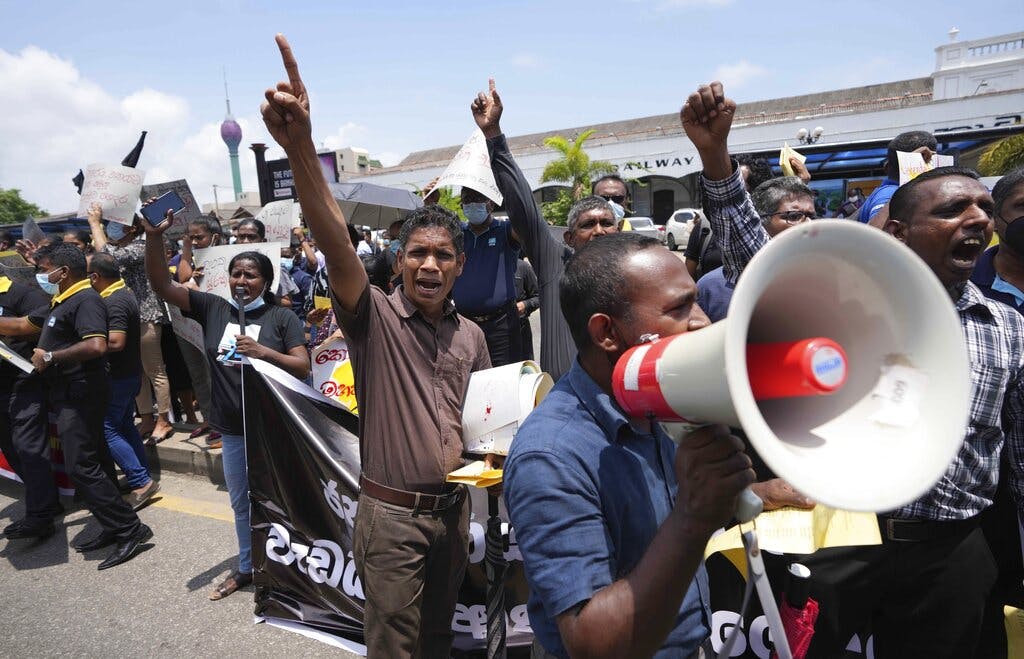As Sri Lanka Nears a Collapse, Where Is America?
Sri Lanka’s capital city, Colombo, is now a ghost town. The purchasing power of the country’s burgeoning middle class is all but nonexistent: the Sri Lankan rupee is now the world’s worst-performing currency. One American dollar would fetch 326 rupees.

Thirteen years after the end of a civil war, Sri Lanka is again on the brink of chaos.
Police yesterday opened fire on protestors in the town of Rambukkana. One person has died and 14 others are said to be in critical condition. It is the first use of force and the first fatality after weeks of protest over what is the country’s worst economic crisis since 1948.
It is also another unfolding theater of geopolitical competition as the consequences of Russia’s invasion of Ukraine reverberate across the globe and reshape our geopolitics.
Sri Lanka’s capital city, Colombo, is now a ghost town. The purchasing power of the country’s burgeoning middle class is all but nonexistent: the Sri Lankan rupee is now the world’s worst-performing currency. One American dollar would fetch 326 rupees.
President Rajapaksa’s government owes international lenders some $51 billion — on which it defaulted last week — with but $1.9 billion in reserves. That is only slightly more than Kim Kardashian’s total net worth.
With this money Mr. Rajapaksa must feed, clothe, and provide security for 22 million people. Inflation in the country is up 30 percent. The price of vegetables has increased fivefold since 2021. The cost of rice has more than doubled.
When Gotabaya Rajapaksa, a Sinhalese Buddhist, was elected president in 2019, he seemed an obvious choice. The country was then reeling from the Easter Sunday terror attacks, with law-and-order the top priority for most Sri Lankans. Mr. Rajapaksa served as defense secretary during the civil war and is credited with ending the conflict, though not without ostensibly committing human rights abuses against the country’s Tamil and Muslim minorities.
The Rajapaksa government is polarizing for many reasons. Mr. Rajapaksa inherited an economy already in dire straits, yet his policies seem to have exacerbated the difficulties. He and his ministers — the most influential of whom are his brothers — pursued a series of ill-advised measures in 2019. Inflation rose, tax revenues plunged, and the deficit widened.
In the meantime, conditions tightened over the course of the pandemic as exports, tourism, and remittance inflows contracted. The war in Ukraine dealt an additional blow. Russian tourists made up the largest contingent of arrivals. That figure is now negligible.
So, with its credit ratings reduced to junk and with access to international debt markets denied, Sri Lanka has had to burn through its foreign reserves to service sovereign bond payments.
The Rajapaksa family is also behind a sudden decision to ban chemical fertilizers last year, ostensibly for public health reasons, before the impending farming collapse forced a reversal. Non-essential imports have also been banned, with everything from milk products to sugar to automotive spare parts now unavailable. Even school exams have been canceled because the government cannot afford the paper on which to print the tests.
Sri Lankans are angry. Tens of thousands have crossed ethnic and religious lines to together take to the streets and demand regime change. Many, too, blame Communist China for the crisis. Sri Lanka could well be a cautionary tale for those who draw too closely to Beijing and its ostentatious promises of “win-win cooperation.”
The Rajapaksa family has for the last two decades been inching Colombo closer to Beijing. Mahinda Rajapaksa, the president’s brother — who was himself president between 2005 and 2015 — brought Sri Lanka into the fold of China’s Belt and Road Initiative. In 2014 he and the Chinese party boss, Xi Jinping, launched a $1.4 billion project for the construction of Colombo’s Port City — a shiny, modern city-space along the capital city’s seafront that was to be reminiscent of Dubai.
Fast-forward eight years and Colombo Port City is more sandbanks than skyscrapers. Hambantota port, the country’s second-largest port, has since 2017 also been in Chinese hands, having been leased in lieu of loan repayments. The company that runs the port is a subsidiary of China Merchants Group, which manages Beijing’s military base in Djibouti.
Beijing holds some 10 percent of Sri Lanka’s external debt. Mr. Rajapaksa’s government has recently asked Beijing for at least $2.5 billion in credit support. Yet while China has voiced its concern, its words have not yet been matched by any actions. Ultimately they might not be, given Beijing’s growing emphasis on risk management in its overseas lending.
Sri Lanka has now agreed to talk with the International Monetary Fund over restructuring its debt, which, given the IMF’s ideology, is likely to compound the problem. It is, in any event, a familiar situation for the country, which has received 16 emergency loans since 1965 and failed to meet their terms nine of those times. Stabilizing debt and other macroeconomic fundamentals take time, which is at a premium. The next national election is due in 2024, should the government last that long.
Yet if Washington and its allies aim to have an Indo-Pacific strategy that amounts to anything, they have yet to make it clear. China’s ostensible retrenchment from foreign lending might here provide an opening. The entanglement of great power politics and debts is not an attractive strategy. Where is an American leader with the alternative?

